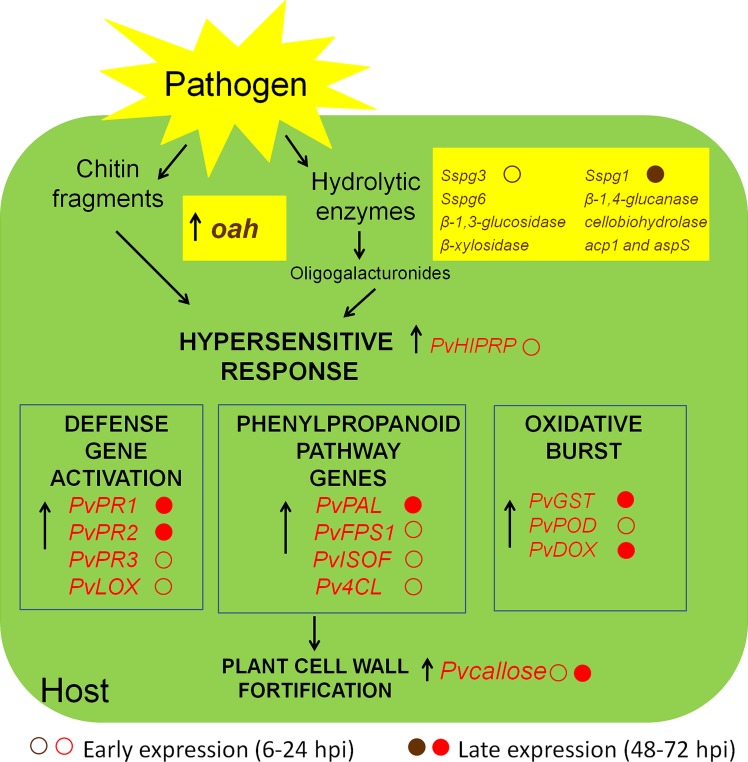FIGURE 9.
Schematic representation of the interaction between S. sclerotiorum and P. vulgaris. In the beginning of the pathogenic process, the fungus secretes hydrolytic enzymes (polygalacturonases, PGs) and oxalic acid. PGs degrade plant cell walls and release oligogalacturonides (OGs), which are elicitors of defense response. The hypersensitive response (HR) of the plant is used by the fungus as a strategy to promote virulence. Chitin fragments of fungus and OGs released from the plant itself allow the recognition of the presence of the pathogen and activate transcription factors which lead to the expression of genes belonging to different pathways of defense. The arrows indicate genes up-regulated in RTqPCR analysis. In brown, S. sclerotiorum genes, and in red, plant response genes.

